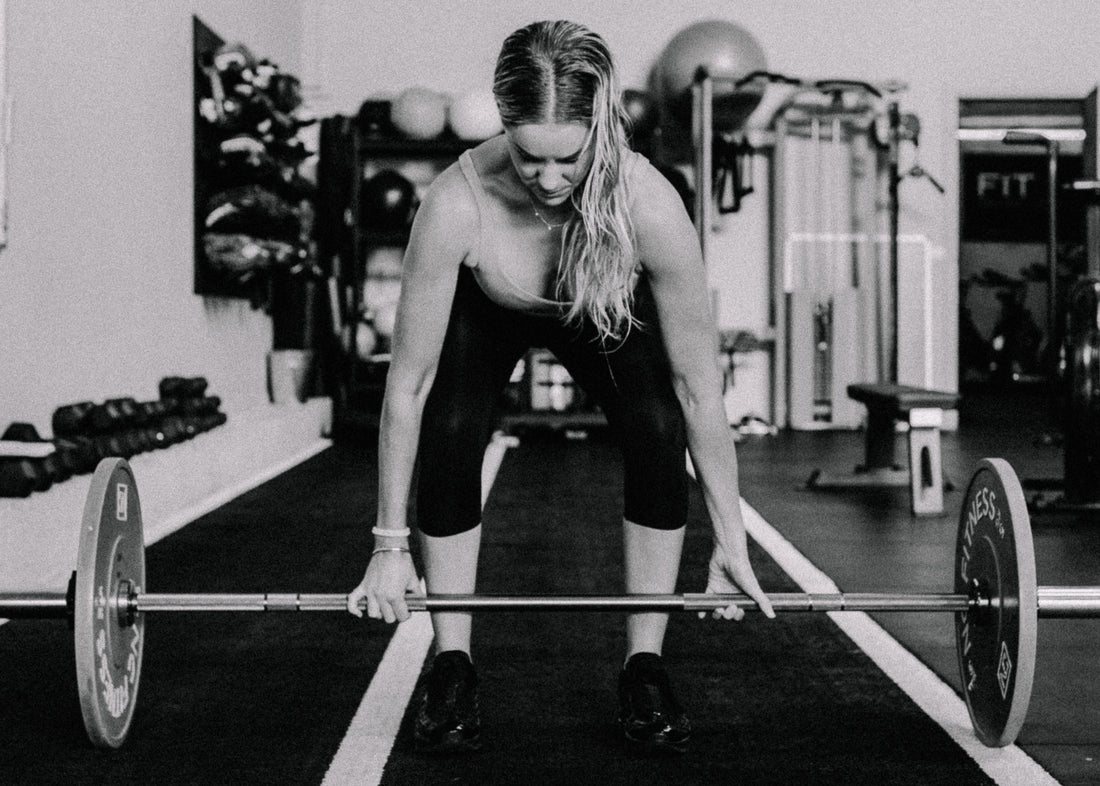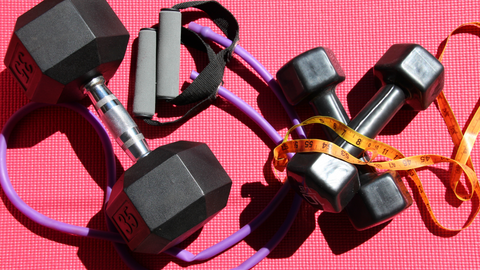
Women’s Weightlifting: 8 Things You Should Know
Share
It is a reality not worth denying – men are physically stronger and women are more physically flexible. This reality does not mean that women cannot be physically strong or that men cannot be physically flexible, but it does describe a broad biological generalisation that explains why we see, in general, more women doing yoga and more men in the free weights section of the gym. It also explains why women’s weightlifting is a topic still not talked about often enough.
As it so happens, both sexes would benefit greatly from venturing into the areas of the opposite sex. Men could become even better at weightlifting if they were also more flexible, and women can draw from an enormous number of advantageous health side effects if they would spend a few days strength training.
So let’s talk about what we mean by women’s weightlifting. Then, we will cover all the things you should know about resistance training for women, including:
Why it matters
Are weights necessary?
How often you should train?
Do you need physical weights?
Can you can weight train to the exclusion of other forms of exercise?
What weightlifting exercises are essential?
How to get started and stay consistent.
What Is Women’s Weightlifting?

First, let’s begin with the most obvious question – what is women’s weightlifting? Often, when people think about women lifting weights, they think of super bulky, competitive weight training, and women worry that they will end up looking more “masculine” than they would like to.
The reality is that nothing could be further from the truth. It actually takes considerable and intense focus on lifting heavy weight repeatedly several times a week in addition to supplemental help and an overhauled diet to end up looking extra bulky. It is actually biologically extremely difficult for women to gain bulk.
When we talk about weight lifting for women, we are talking about strength training, also referred to as resistance training, that will help women build and maintain a healthy amount of muscle necessary for good overall health. Building lean muscle also contributes to more effective weight loss and helps to tone your overall physique.
The reality is that it does not take much to gain a tremendous amount of benefits from weightlifting for women. Here are a few things you should know about women’s weightlifting.
8 Things You Should Know About Women’s Weightlifting

Resistance training, meaning anything that requires your body to undergo stress from lifting, pushing, or pulling weight, will build healthy muscle on the body. This healthy muscle is critical to overall health, especially as we grow older, when we naturally lose muscle and it is harder to put on and maintain.
Healthy muscle on our bodies means stronger bones, more dense bones, better brain health, better balance, and more. It means we can live longer, healthier, and without assistance.
The number one cause of death of the elderly is a result of falling and older people fall more as a result of poor balance and low muscle mass. They break bones more often because of low bone density. It is all connected.
Women in particular need to put on more muscle as they age because of how depleted our bones get over time, especially if we carry and bear children. We lose calcium with every child we carry, and we lose iron every month during our menstrual cycle. Building muscle and maintaining it helps keep those nutrients in balance.
Similarly, it can be more difficult to successfully shed pounds if on a weight loss programme as women get older. When building lean muscle mass, the additional muscle requires additional energy. In turn, this raises your resting metabolic rate, or the amount of calories your body burns while at rest. This increased bodily demand for calories can aid in regulating your weight or losing weight when combined with a healthy diet.

Technically, no. Plenty of people just starting out with strength training use food tins, weighted sacks as weights to lift and move around. As long as you are lifting regularly, in intervals, you are doing resistance training. However, if you want to be consistent with strength training, investing in a set of good weights such as dumbbells, kettlebells and medicine balls is a good plan. As you become stronger, you may want to increase your weights or try barbell training which offers variation to the workouts you are doing.
There are also several types of exercises that will teach you to use your own body weight as a form of resistance training. Push ups and pull ups are a great example of strength training that build muscle without using a physical weight.
3. How Often Should You Train?
In general, every woman should aim for at least 2 x 30 minutes weightlifting workout sessions per week. This goal is a bare minimum and is worth fitting into your schedule.
As you find workouts that work for you, that you enjoy, and in places you enjoy doing them, you will likely find yourself increasing at the very least your days, maybe up to three or four days a week for 20 minutes at a time.
The most important thing to do is to avoid setting an unrealistic goal, like one hour every day, that you will never meet. This process sets you up for failure and demotivation which will then have you avoiding working out altogether.
As with any exercise routine, start small and build from there.
4. Should I Only Lift Weights, Then?

It is advisable to be as flexible as possible with the types of fitness you perform regularly. This allows your body time to rest from intense weights and to avoid your fitness sessions becoming stale. A good idea is to combine weight training with cardiovascular activities such as HIIT workouts and interval training.
Alternatively, have days where you focus on weights more and on other days more on cardio, even if it is just a brisk walk or being active in your daily activities. Walk more, use stairs and build movement into your everyday life. You may choose to do Cardio workouts such as cycling, rowing or running. These days you can do all of these things from home using spin or smart bikes, rowers and treadmills as opposed to going to a gym.

Yes. You should warm up your muscles before you stress them out. This prevents injury or longterm damage to your muscles, tendons and ligaments. Always do a full warm and cool down after exercising especially after using weights.
6. What Exercises, and How Many of Each, Should You Do?
Again, you can start small and build it up.
Performing arm exercises one day, core exercise another day, and leg exercise is three days a week of weightlifting. Build in one more day of a total body circuit and you’ve reached four days a week.
Here is a suggested routine for Beginners:-
Day 1
You can start with a set of dumbbells. If you do a round of tricep kick backs, bicep curls, arm extensions, and push ups, with three sets of ten repetitions each, this should approx 20 minutes.
Day 2
For legs, try squats, lunges, and leg presses, same sets and reps, again for 20 minutes.
Day 3
Work your core by doing sit-ups, leg lifts, and crunches for 20 minutes.
Day 4
Select a combination of the exercises you enjoyed for 20 minutes
The answer to this is what feels right to you, everyone is different. Start with lighter weights and build on them, try different weights for different exercises. With weight training it is more about the quality of the exercises you are performing and not so much about the heaviness of the weights unless you are competing or a professional weightlifter. As long as you feel the 'burn' and your muscles are being stressed enough without extreme discomfort you are using weights to suit your needs.
8. How to Get Started and Stay Consistent
The best way to get started is to have a plan. It doesn't need to be detailed with lots of challenges and goals set into it, just a plan that you are going to stick to.
Invest in good quality weight equipment that feels comfortable to use, is durable and simple to store away. For eg, Hex Dumbbells are designed in a hexagon shape to avoid rolling and have a strong, ergonomic grip handle. Dumbbell weights are a great place to start when starting a weight training journey as they are affordable and multi-functional. You can also buy sets of different weights so when you become stronger and want to intensify your workouts you have heavier weights to keep you challenged.
If you are lucky enough to have a Home Gym, you may have room to incorporate different weight training equipment to add variation to your routines. Squat Racks and Multi Gyms have built in sections for barbells and weights storage so you can combine your needs in one piece of kit.

To stay consistent with weight training, it is important to track your progress so you can appreciate how far you have come. This in turn drives motivation which will see you continue to challenge yourself and stick to your goals.
You may also be interested in our articles:
